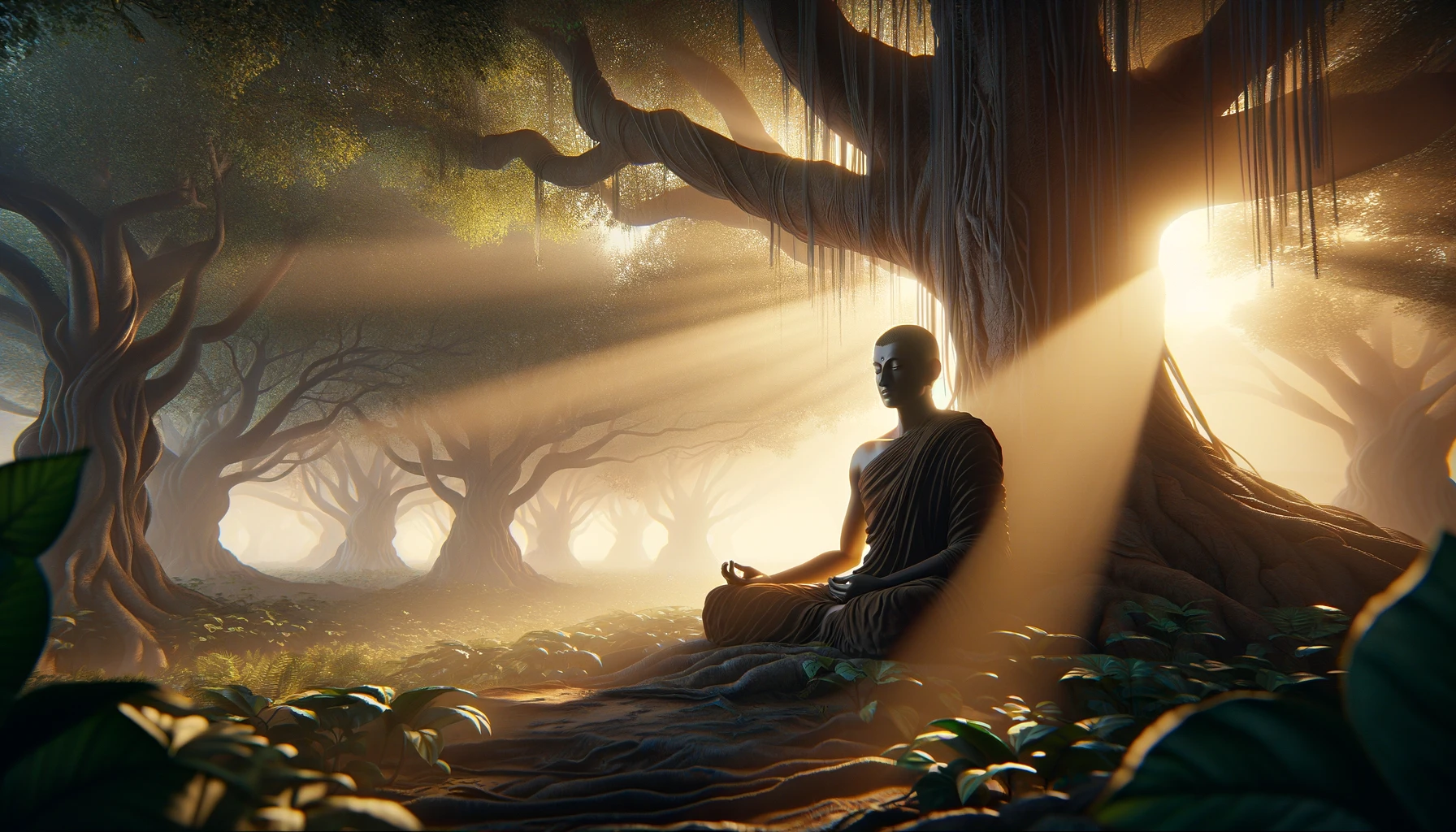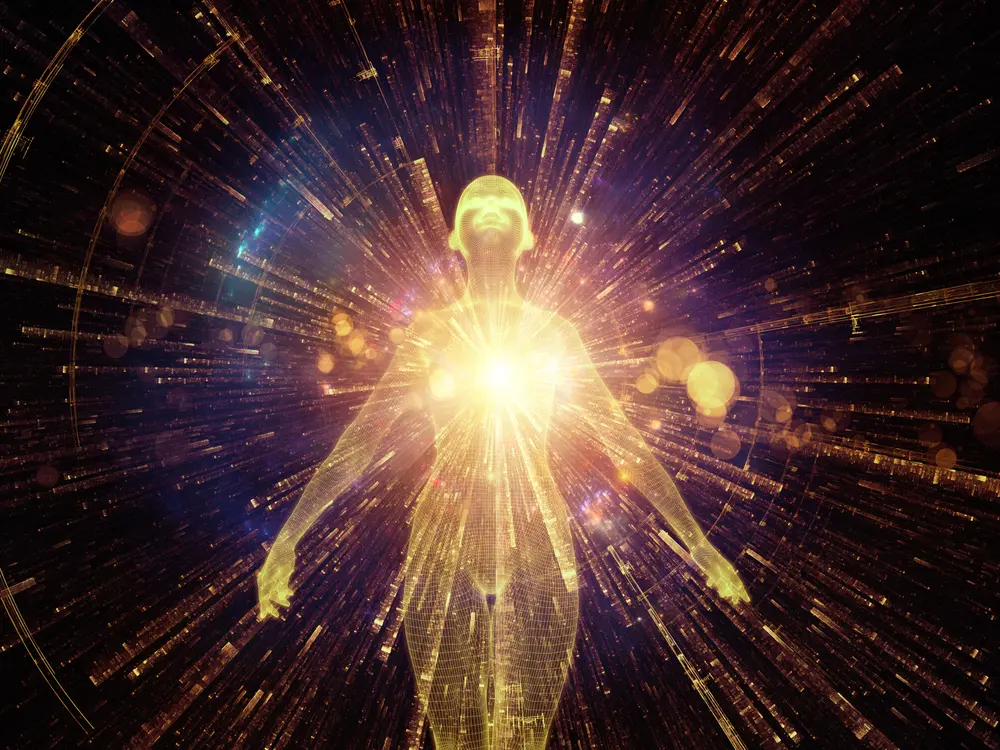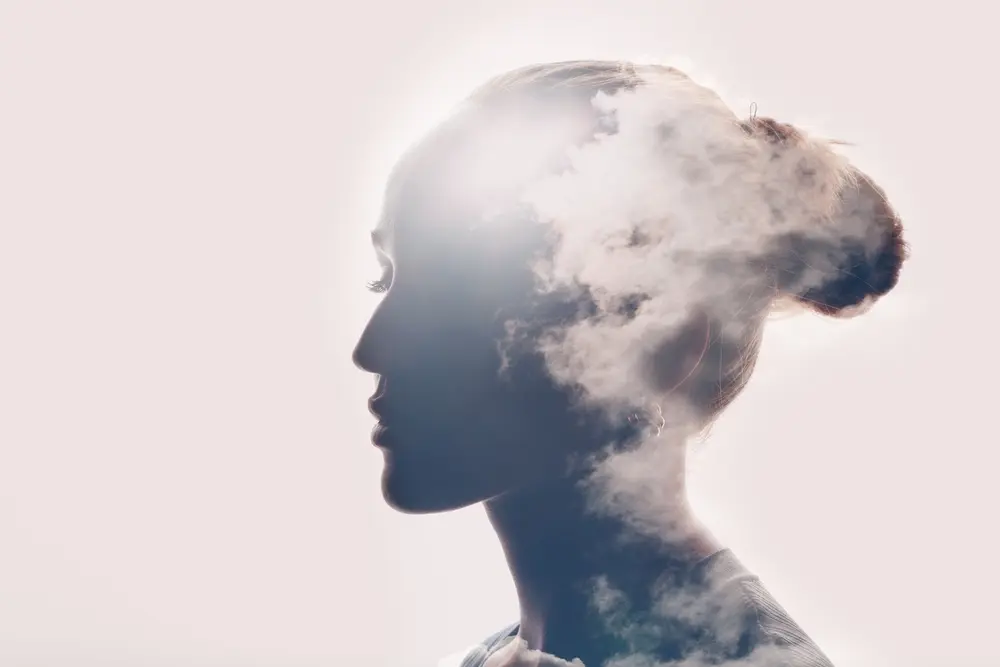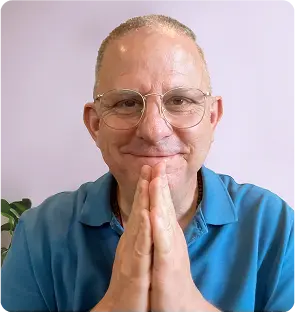
Bodhi Day: The Awakening Of Siddhartha Into The Buddha
Bodhi Day, commemorating the enlightenment of Siddhartha Gautama, the historical Buddha, is observed on different dates across various Buddhist traditions around the world. Here’s a summary based on the traditions mentioned:
Japan: Celebrates Bodhi Day on December 8th, following the Gregorian (Western) calendar. This is a fixed date every year.
East Asia (excluding Japan): The observation varies, typically falling between the winter solstice and the lunar new year. This period can vary each year depending on the lunar calendar, which means the exact date shifts annually. The winter solstice occurs around December 21st or 22nd in the Gregorian calendar, and the Lunar New Year usually falls between January 21st and February 20th. Therefore, Bodhi Day in these regions could be observed anytime within this range, depending on specific local traditions and lunar calculations for the year.
Southeast Asia: Buddhists in Southeast Asia celebrate the Buddha’s enlightenment in May. This often coincides with Vesak (also spelled Vesākha or Wesak), a major Buddhist festival that celebrates the birth, enlightenment (Bodhi), and death (Parinirvāna) of the Buddha. Vesak itself is observed on the full moon of the 4th month in the Chinese lunar calendar, which typically falls in May in the Gregorian calendar.
Tibetan Buddhists: They observe the occasion in June. The specific celebration dedicated to the Buddha’s enlightenment within Tibetan Buddhism is known as Saga Dawa Düchen. It is observed on the full moon day of the fourth lunar month in the Tibetan calendar, which usually corresponds to a day in June in the Gregorian calendar.
These variations highlight the diversity within Buddhist traditions and the different calendars and cultural considerations that influence the observance of Bodhi Day.
What Happened on This Day?
Siddhartha Gautama, who later became known as Gautama Buddha, is traditionally believed to have attained enlightenment and become the Buddha at the age of 35. According to Buddhist tradition, Siddhartha was born in Lumbini, Nepal, and he spent several years as a prince in the royal palace before renouncing his princely life in search of spiritual truth. On the fateful night of departure from the royal kingdom, Siddhartha left behind his wife, newborn child, whom he did not meet before leaving, and his large, extended family.
After leaving the palace, Siddhartha engaged in six years of ascetic practices and meditation before finally achieving enlightenment under the Bodhi tree in Bodh Gaya, India. It was during this period of meditation that he gained profound insights into the nature of suffering and the path to liberation.
His enlightenment marked the beginning of his role as the Buddha, the “Awakened One,” and he spent the rest of his life teaching his insights and wisdom to others. The age of 35 is a significant milestone in the life of Siddhartha Gautama, as it represents the moment of his spiritual awakening and the start of his mission to share his teachings with the world.
More on Buddha’s family later in this article.
Bodhi Day
This auspicious day usually falls on the full moon day in April or May, depending on the lunar calendar, and it is celebrated with great devotion and reverence by Buddhists around the world. On this day, Siddhartha completed his journey to release all attachments and desires to merge with The Divine and embody pure consciousness in human form.
Siddharth Gautama had been sitting under the Bhodi Tree for several months, species Ficus religiosa, when he saw beyond all form, released his temporary Self-identities, and become enlightened. More on the sacred tree later in this article.
According to traditional Buddhist accounts, Siddhartha Gautama, who would later become Gautama Buddha, sat under the Bodhi tree in Bodh Gaya, India, for a period of approximately seven weeks before attaining enlightenment. The specific time frame is often described as 49 days and nights of continuous meditation.
During this period, Siddhartha engaged in deep meditation, contemplation, and spiritual practices. He faced various challenges and temptations, but his determination and unwavering commitment to seeking the truth ultimately led to his enlightenment.
It’s important to note that these details are based on traditional Buddhist narratives and may vary slightly in different Buddhist texts and traditions. The key point is that it was through intense meditation and spiritual effort under the Bodhi tree that Siddhartha Gautama achieved the supreme enlightenment and became the Buddha.
Bodhi Day, known as such in China, and known as Rohatsu in Japan, is indeed celebrated on December 8th in the Gregorian (Lunar), or January 18 in the solar calendar, by some Buddhist traditions. This day is associated with the commemoration of the Buddha’s enlightenment under the Bodhi tree.
However, it’s important to note that the specific date of Bodhi Day can vary based on different Buddhist calendars and traditions. The December 8th lunar calendar date corresponds to the Gregorian calendar and is commonly observed in Chinese and Japanese Zen Buddhism.
In the Theravada tradition and some Mahayana traditions, the celebration of Buddha’s enlightenment typically falls on the full moon day in April or May according to the lunar calendar, which is known as Vesak or Buddha Purnima.
So, while December 8th is indeed recognized as Bodhi Day in some Buddhist traditions, it may not be the date observed by all Buddhists, as the timing can vary depending on regional and sectarian practices within Buddhism.
It’s important to note that Buddhism has various branches and traditions, and there can be differences in the way different Buddhist communities observe and celebrate significant events in the life of Siddhartha Gautama (Buddha). The more commonly recognized date for Buddha’s Enlightenment Day remains tied to the lunar calendar, typically falling in April or May.
While Buddha Sat Under The Sacred Tree
As Siddhartha Gautama sat and meditated under the Bodhi tree in Bodh Gaya, India, during his quest for enlightenment, several significant events and experiences are traditionally associated with his time of meditation. These events are often described in Buddhist texts and are considered important aspects of the Buddha’s journey to enlightenment. Here are some of the key events and experiences said to have occurred:
Mara’s Temptations: According to Buddhist tradition, Mara, the personification of desire, delusion, and the hindrances to enlightenment, attempted to distract Siddhartha from his meditation. Mara sent various forms of temptations and distractions, including sensual pleasures, fear, doubt, and desire for power, in an effort to prevent Siddhartha from attaining enlightenment. However, Siddhartha remained steadfast and resolute.
The Great Enlightenment: After facing and overcoming Mara’s challenges, Siddhartha experienced a profound and deep realization of the nature of reality. He achieved supreme enlightenment, which included insights into the Four Noble Truths and the Noble Eightfold Path. This marked the moment when Siddhartha became the Buddha, the “Awakened One.”
The Morning Star: It is said that upon attaining enlightenment, Siddhartha gazed at the morning star (Venus) in the eastern sky, and at that moment, he exclaimed, “I see the morning star! All sentient beings possess the wisdom and virtue of the Tathagata [Buddha]!” This is seen as a significant moment of realization.
The Earth Witness Mudra: During his meditation, Siddhartha is believed to have called upon the Earth to bear witness to his attainment of enlightenment. In response, the Earth is said to have shaken, confirming his enlightenment.
The Offering of Milk Rice: After Siddhartha became the Buddha, a village woman named Sujata offered him a bowl of milk rice (kheer) as a symbol of gratitude and respect. This offering is often depicted in Buddhist art and is considered a symbol of generosity and kindness.
Teaching the Dharma: Following his enlightenment, the Buddha spent several weeks in the vicinity of the Bodhi tree, contemplating the profundity of his realizations. He then made the decision to share his insights with others. His first teachings, known as the Dhammacakkappavattana Sutta (Setting the Wheel of Dhamma in Motion), were delivered to a group of five ascetics in the Deer Park at Sarnath, near Varanasi.
These events are central to the traditional narrative of the Buddha’s path to enlightenment and the beginning of his teaching mission. They emphasize the Buddha’s unwavering determination, his triumph over obstacles, and his deep insights into the nature of suffering and the path to liberation.
Buddha’s Reunion With His Birth Family
According to Buddhist tradition, after Siddhartha Gautama (the future Buddha) attained enlightenment and became the Buddha, he eventually reunited with his birth family, including his wife, Yasodhara, and his son, Rahula.
Here’s a brief overview of what happened with his birth family:
Wife Yasodhara: After Siddhartha left his princely life and family to seek enlightenment, Yasodhara continued to live in the palace. She had a deep longing for Siddhartha’s return and continued to support him in her own way, hoping for his success on his spiritual journey. After Siddhartha became the Buddha, he returned to his homeland and visited Yasodhara. Upon seeing him as the fully awakened Buddha, she became one of his devoted followers and eventually attained enlightenment herself.
Son Rahula: Siddhartha’s son, Rahula, was born shortly before Siddhartha left the palace. After many years, when Rahula was a young boy, he expressed a desire to meet his father. Siddhartha returned to the palace, and upon meeting his father, Rahula decided to follow him as a novice monk. Rahula later became a monk and one of the Buddha’s foremost disciples.
Birth Family’s Acceptance: It is said that Siddhartha’s return to his family was a significant event, and they all came to accept him as the Buddha and embraced his teachings. His father, King Suddhodana, also became a follower of the Buddha and eventually attained enlightenment.
These reunions and the acceptance of Siddhartha as the Buddha by his birth family are often cited as examples of the transformative power of the Buddha’s teachings and the deep spiritual connections that can be forged within families. It is worth noting that these accounts are based on traditional Buddhist narratives and may vary in interpretation among different Buddhist traditions and texts.
Traditions Associated With Buddha’s Enlightenment Day
Birth of Siddhartha Gautama: Siddhartha Gautama, who would later become Buddha, was born in Lumbini, Nepal, in the 6th century BCE. His birth is celebrated on this day, and it is believed to have taken place under a sal tree in a garden.
Enlightenment: The most significant event commemorated on this day is Siddhartha Gautama’s enlightenment, which occurred when he was meditating under the Bodhi tree in Bodh Gaya, India. It is said that he attained supreme enlightenment and became the Buddha, meaning “the awakened one” or “the enlightened one.” This event is often depicted in Buddhist art and literature.
Noble Eightfold Path: Buddha’s enlightenment led to his understanding of the Four Noble Truths and the development of the Noble Eightfold Path, which forms the core of Buddhist teachings. Buddhists often reflect on these teachings and strive to follow the path to attain spiritual enlightenment.
Visiting Temples: Buddhists visit temples and monasteries on this day to offer prayers, light lamps, and make offerings to honor Buddha’s teachings and his enlightenment. Many temples are adorned with colorful decorations and illuminated with lanterns and candles.
Meditation and Mindfulness: Devotees engage in meditation and mindfulness practices, following in the footsteps of Buddha’s own meditation that led to his enlightenment. It’s a time for introspection and spiritual growth.
Acts of Generosity: Acts of charity and kindness are encouraged on this day. Buddhists often make donations to the less fortunate and engage in acts of generosity as a way to cultivate compassion and selflessness.
Bathing the Buddha: In some cultures, it is a tradition to pour water or scented water over statues of Buddha, symbolizing the cleansing of one’s soul and purifying one’s intentions.
Processions and Parades: In certain Buddhist-majority regions, there may be processions and parades featuring images of Buddha, traditional music, and cultural performances.
Buddha’s Enlightenment Day is a time for Buddhists to reflect on the teachings of compassion, non-violence, and the path to enlightenment that Buddha offered to the world. It is a day of spiritual significance, self-reflection, and celebration of the life and wisdom of Gautama Buddha.
What Does Bodhi Day Represent?
Buddha’s enlightenment, also known as “Bodhi,” is a central event in Buddhist tradition and is described in various Buddhist texts and scriptures. The story of Buddha’s enlightenment is a fundamental narrative in Buddhism, and it symbolizes the attainment of supreme wisdom and liberation from suffering. Here is a brief overview of how Buddha attained enlightenment:
Renunciation of Worldly Life: Siddhartha Gautama, who would later become Buddha, was born into a royal family in Lumbini, Nepal. Despite a life of luxury and privilege, he became deeply troubled by the suffering he observed in the world, such as old age, sickness, and death. This led him to renounce his princely life in search of spiritual answers.
Six Years of Austerities: After leaving his palace, Siddhartha Gautama embarked on a spiritual journey. He initially practiced extreme asceticism, fasting, and severe self-mortification, along with other ascetics. However, he realized that such extreme practices did not lead to enlightenment and were detrimental to the body and mind.
Meditation Under the Bodhi Tree: Siddhartha then decided to follow a middle path, a balanced approach between indulgence and asceticism. He sat down in meditation under a Bodhi tree (a type of fig tree) in Bodh Gaya, India, and made a determined vow not to rise until he had attained enlightenment.
The Four Noble Truths: During his meditation, Siddhartha Gautama gained deep insight into the nature of suffering and its causes. He formulated the Four Noble Truths:
The Truth of Suffering (Dukkha): Acknowledging the existence of suffering in life.
The Truth of the Cause of Suffering (Samudaya): Identifying craving and attachment as the root causes of suffering.
The Truth of the Cessation of Suffering (Nirodha): Understanding that suffering can be ended by eliminating its causes.
The Truth of the Path to the Cessation of Suffering (Magga): Describing the Noble Eightfold Path as the way to end suffering and attain enlightenment.
Attainment of Nirvana: As Siddhartha meditated under the Bodhi tree, he experienced profound realizations and insights into the nature of reality. On the full moon night of Vesak (Buddha’s Enlightenment Day), he finally attained Nirvana, which is a state of complete liberation from suffering, desire, and rebirth. This marked the moment of his enlightenment.
Proclaiming the Dharma: After attaining enlightenment, Siddhartha Gautama became known as Buddha, or the “Awakened One.” He spent the rest of his life teaching his insights and wisdom to others, forming the foundation of Buddhism.
Buddha’s enlightenment is seen as the culmination of his spiritual journey and the discovery of the path to liberation from suffering. It is the central event that transformed Siddhartha into the Buddha and led to the development of Buddhist teachings, which have had a profound impact on the lives of countless individuals and continue to be followed by Buddhists around the world.
The Bodhi Tree
Also known as the Bo tree, the Bodhi Tree is a significant and sacred tree in Buddhism. It is most famous for being the tree under which Siddhartha Gautama, who later became known as Gautama Buddha, attained enlightenment. Here are some key aspects of the Bodhi tree:
Location of Enlightenment: The Bodhi tree is traditionally believed to have been located in Bodh Gaya, a town in the Indian state of Bihar. It was under this tree that Siddhartha Gautama sat down to meditate and ultimately attained enlightenment.
Symbol of Enlightenment: The Bodhi tree symbolizes the place where the Buddha achieved supreme enlightenment and awakened to the true nature of reality. It serves as an important symbol of enlightenment, wisdom, and liberation from suffering in Buddhism.
Bodhi Day: As mentioned earlier, Bodhi Day (or Rohatsu in Japan) is celebrated on December 8th in some Buddhist traditions to commemorate the Buddha’s enlightenment under the Bodhi tree.
Ficus religiosa: The scientific name of the Bodhi tree is Ficus religiosa. It is a species of fig tree and is often referred to as the “sacred fig.” It is a large, long-lived tree with heart-shaped leaves.
Pilgrimage Site: The Bodhi tree in Bodh Gaya is considered one of the most important pilgrimage sites for Buddhists. Devotees from around the world visit this site to pay their respects and meditate in the vicinity of the tree.
Maintenance: Over the centuries, the original Bodhi tree at Bodh Gaya has been replaced several times due to natural aging and damage. The current tree at the site is believed to be a direct descendant of the original Bodhi tree. It is carefully tended to and protected as a living symbol of the Buddha’s enlightenment.
The Bodhi tree holds great significance in Buddhist tradition as the site where Siddhartha Gautama, after years of meditation and deep contemplation, achieved spiritual awakening and became the Buddha, the “Enlightened One.” It continues to inspire Buddhists and spiritual seekers worldwide.
The Path To Enlightenment, According To The Buddha
According to Buddhism, the path to achieving enlightenment, also known as Nirvana, is outlined in the teachings of the Buddha and is often referred to as the “Noble Eightfold Path.” The Noble Eightfold Path consists of eight interconnected principles or practices that guide individuals toward spiritual awakening and liberation from suffering. These principles are divided into three categories: wisdom, ethical conduct, and mental discipline. Here is an overview of the Noble Eightfold Path and its components:
- Right View (Samma Ditthi): This is the correct understanding of the Four Noble Truths, which acknowledge the existence of suffering (dukkha), its causes, its cessation, and the path to its cessation.
- Right Intention (Samma Sankappa): It involves cultivating wholesome intentions and motivations, such as renunciation, compassion, and goodwill, while abandoning unwholesome desires and intentions.
- Right Speech (Samma Vaca): Practicing truthful, kind, and skillful communication while refraining from lying, harsh speech, divisive speech, and idle chatter.
- Right Action (Samma Kammanta): Engaging in ethical and virtuous conduct by refraining from harming living beings, stealing, and engaging in sexual misconduct.
- Right Livelihood (Samma Ajiva): Choosing a livelihood or occupation that is honest, ethical, and does not harm others or contribute to suffering.
- Right Effort (Samma Vayama): Exerting effort to develop wholesome qualities and abandon unwholesome ones. It involves cultivating mindfulness and self-discipline.
- Right Mindfulness (Samma Sati): Developing mindfulness, awareness, and concentration in the present moment. This includes awareness of body, feelings, mind, and mental phenomena.
- Right Concentration (Samma Samadhi): Cultivating deep concentration and mental stability through meditation practices. This leads to a focused and one-pointed mind.
The Noble Eightfold Path is often depicted as a wheel, symbolizing the path to liberation from the cycle of suffering and rebirth (samsara). It emphasizes the balanced development of wisdom, ethical conduct, and mental discipline. Following this path is seen as a means to attain enlightenment and ultimately reach Nirvana, a state of freedom from suffering and the cycle of birth and death.
It’s important to note that the Noble Eightfold Path is not a linear progression but rather an interconnected set of practices that individuals can work on simultaneously. Buddhism teaches that following this path with sincerity, mindfulness, and dedication can lead to spiritual awakening and the realization of one’s true nature.



















